
In this guide, you’re going to learn the next computer network topic, i.e. types of topologies with proper diagrams. Following are the sub-topics that you will learn in this guide.
Let’s get started, Happy learning!
What is Network Topology?
In computer networks, network topologies are the arrangement of networks. Network topology describes the layout or appearance of network devices such as computers, cables and other components. Components within a data communication network are interconnected both physically and logically.
The physical topology describes how a network is physically laid out and the logical topology describes how data flow through the network.
Types of Topologies
There are six types of topologies that are used in computer networks to arrange network devices.
- Bus Topology
- Ring Topology
- Tree Topology
- Bus Topology
- Mesh Topology
- Hybrid Topology
The working model of topologies is different and let’s discuss types of topologies and what are their basic principle of working.
Bus Topology
Bus topology is a multi-point data communication and it is one of the simple topologies. There is only one cable and devices are connected with drop lines to this cable.
In a bus topology, when the computer sends a signal to the cable, all the connected computers receive the information, but the computer whose address matches the signal accepts the data.
The following diagram shows the bus topology diagram.
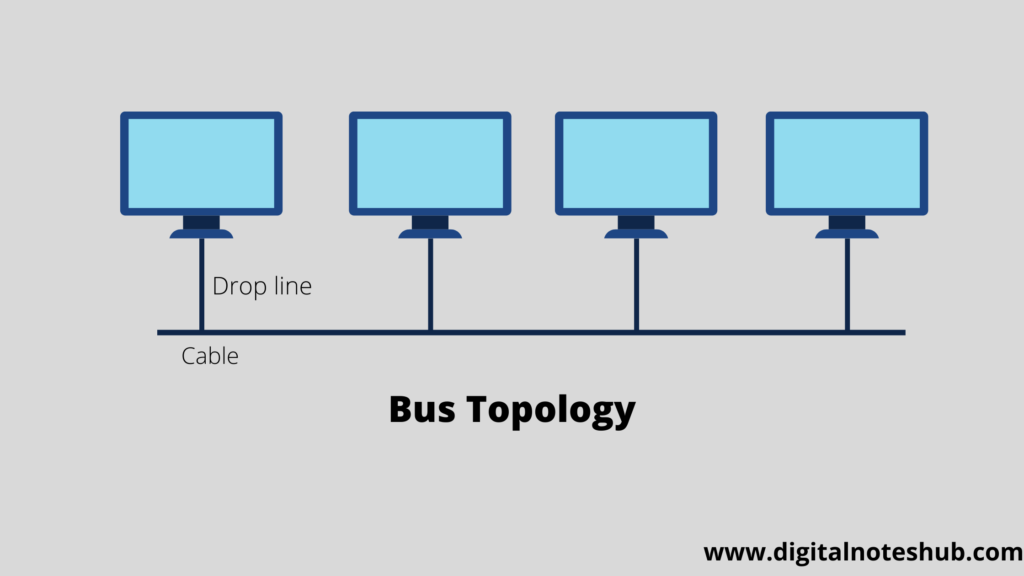
Bus Topology Advantages and Disadvantages
Advantages:
- The bus topology is easy to understand and install.
- The cabling cost is low.
- The bus topology is easy to expand.
Disadvantages:
- Only one computer can transmit data at one time and others have to wait till their turn comes.
- If the cable breaks or the connection is loose, then it can bring down the entire network.
- The speed of bus topology is slow because only one computer can send message at a time.
Ring Topology
In a ring topology, each computer is connected to the next computer and the last computer is connected to the first one, as shown in the diagram below. The computers are connected as a ring and that’s why it is called a ring topology.
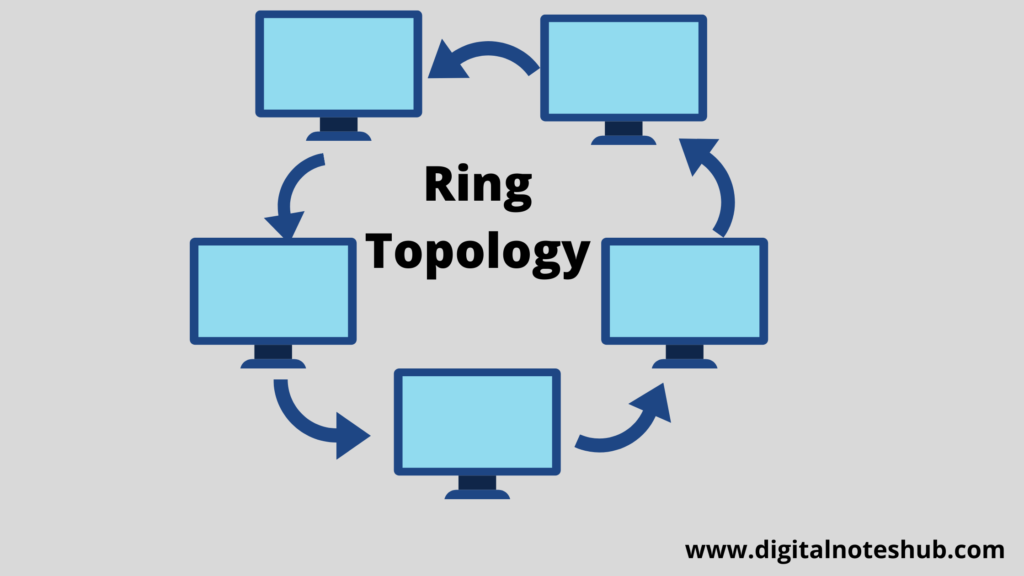
Ring Topology Advantages and Disadvantages
Advantages:
- Every computer has equal access to the token.
- Data can flow in both directions.
Disadvantages
- Failure of one computer on the ring can affect the entire network.
- Adding or removing the computers from topology can disturb the network activity.
Star Topology
In this topology, all the computers are connected to the main computer, which is called Hub. Hub is placed in the centre and all the other computers are connected with the hub through the cable, as shown in the figure below.
Each computer on a network communicates with a central hub. The further hub can send the message either to all computers or only to the destination computer.
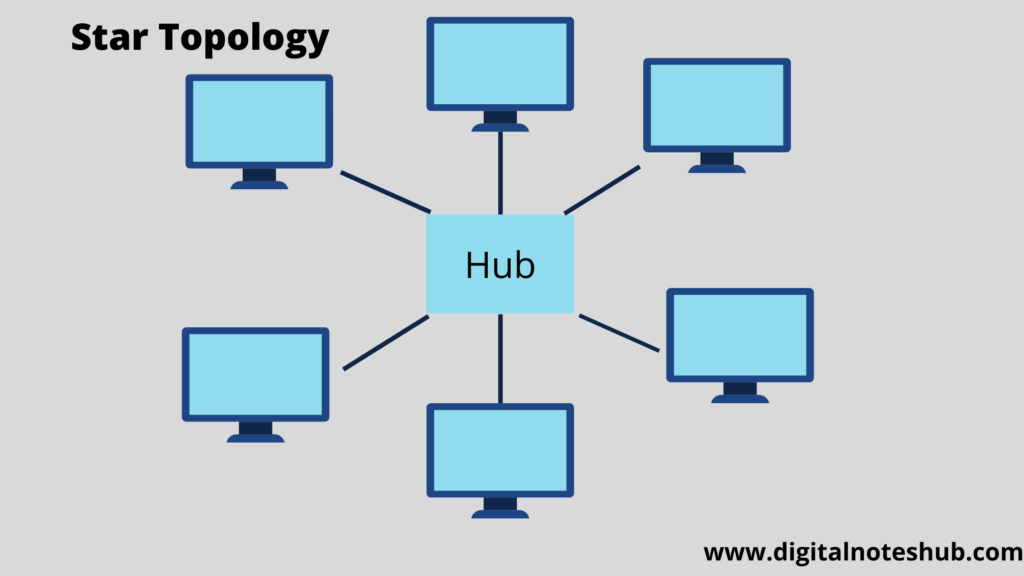
Star Topology Advantages and Disadvantages:
Advantages:
- It provides high performance as there are no data collisions.
- If one device or cable fails then the other continue working, so it is more reliable as compared to other types of topologies.
Disadvantages:
- If the central hub fails, the whole network fails.
- The cabling cost is high.
Mesh Topology
In a mesh topology, every device has a point-to-point link to every other device in a network. The arrangement of devices is more complicated in this topology as compared to the other topologies.
As you can see in the following mesh topology diagram.
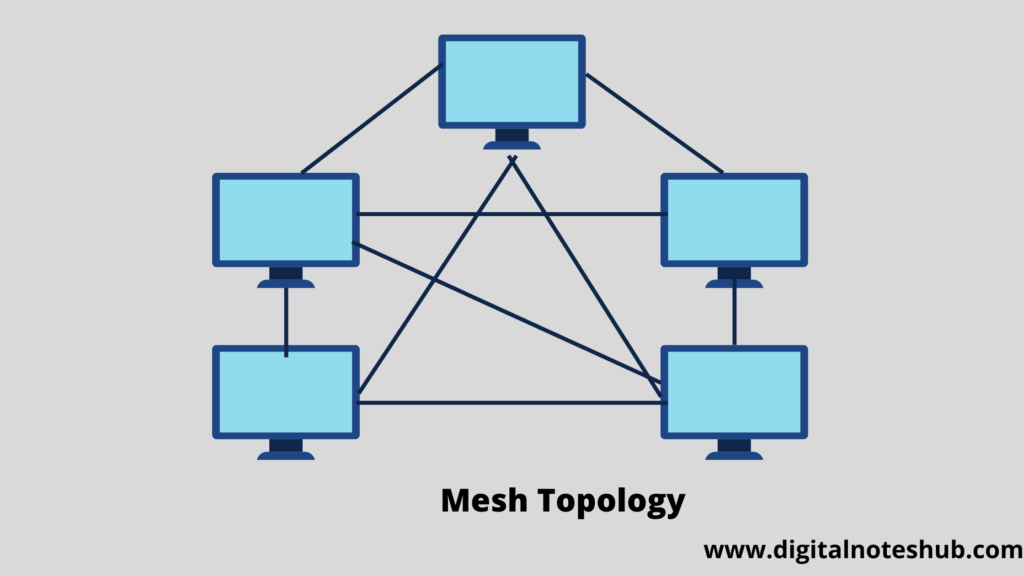
Mesh Topology Advantages and Disadvantages
Advantages
- It provides security and privacy.
- The failure of a single computer does not bring down the entire network.
Disadvantages:
- Cabling cost is more.
- The hardware cost to connect each device is expensive.
Tree Topology
Tree topology is a variation of star topology and there is one central hub and multiple secondary hubs.
The central hub is always active, and the secondary hub may be active or passive. The following is the tree topology diagram.
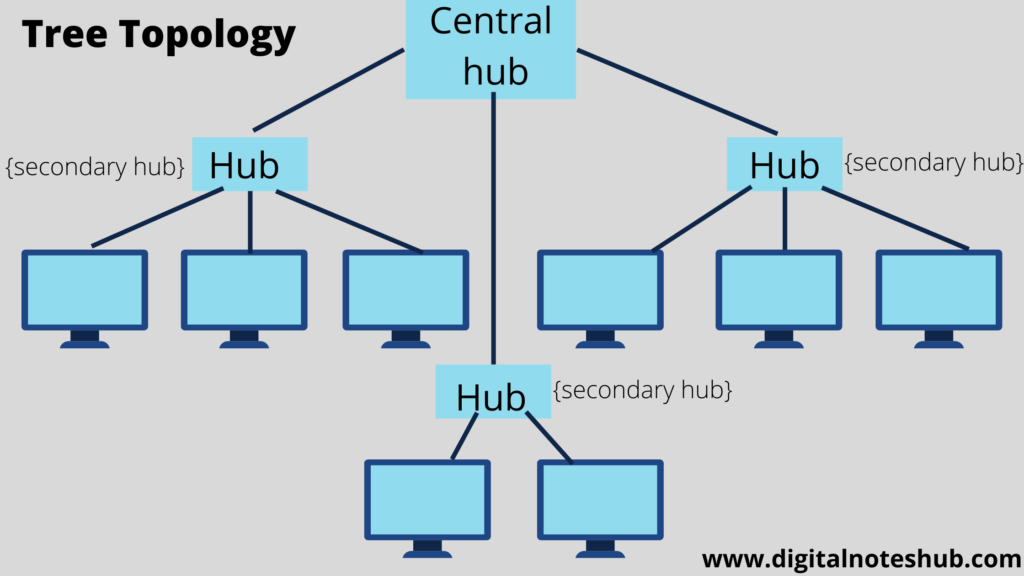
Tree Topology Advantages and Disadvantages
Advantages:
- It allows more devices to be attached to the single hub.
- It allows the network to isolate.
Disadvantages:
- The system breaks down if the central hub fails.
- The cabling cost is high.
Hybrid Topology
A hybrid topology is a combination of two topologies and it means you can combine any of two topologies to make a hybrid topology.
The following is the hybrid topology diagram, and it is the combination of bus and star topology.
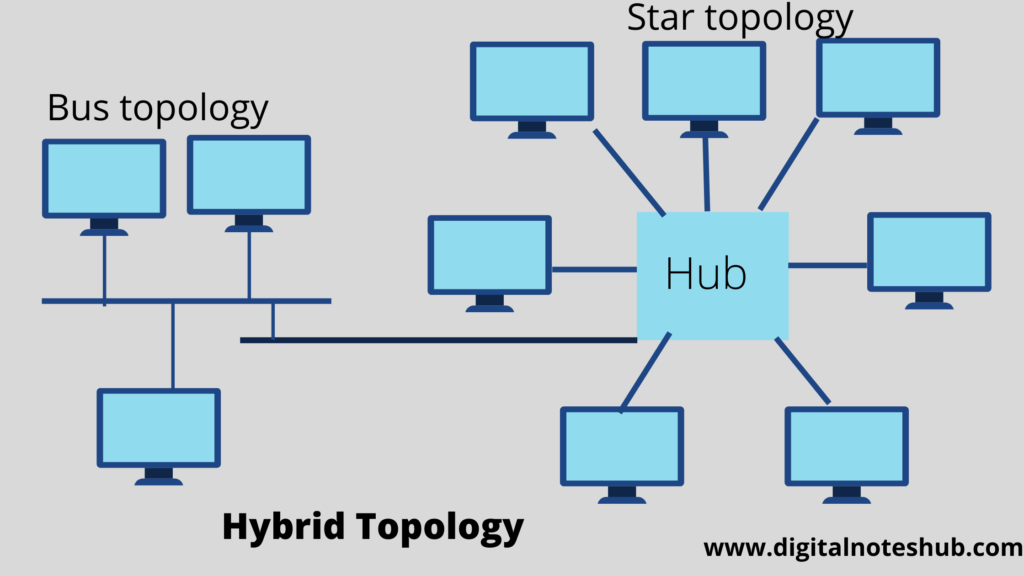
Hybrid Topology Advantages and Disadvantages
Advantages:
- More flexible and realiable.
- Benefits of different types of topologies in one.
- Perfect for handling large volume of traffic.
- Ability to modify as per requirement.
Disadvantages:
- More expensive as compared to other types of toplogies.
- Design is very complex as mulitple toplogies are combined.
What Are Your Thoughts?
Have you found this guide on types of topologies helpful? Let me know in the comment section.
Check out Related Computer Network Notes!



